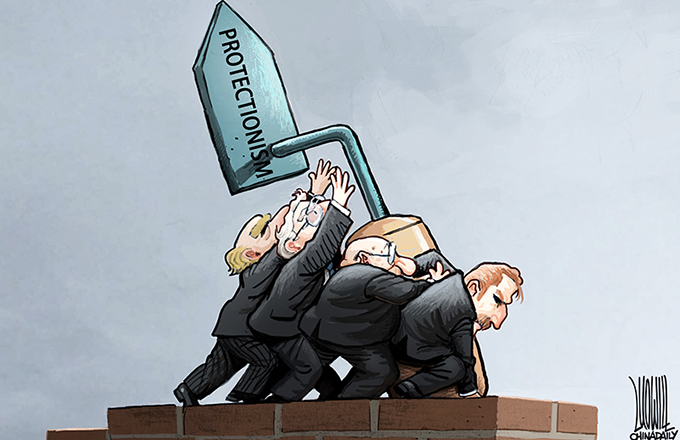A mission that is possible
Promoting cooperation in traditional security areas is challenging, since it requires greater trust. Still, it can be done. In 1998 China and the US signed an agreement not to target their nuclear weapons at each other. Could they go a step further to sign a non-first-use agreement, such as the one between China and Russia?
Over the years, Beijing has asked the US to stop selling arms to Taiwan and the US has called on Beijing to withdraw short-range missiles aimed at Taiwan. Now that cross-Straits relations have improved, perhaps it is time for the US to promise not to sell arms to Taiwan and Beijing to agree to withdraw the missiles. Could the US lift the restrictions in the Defense Authorization Act for Fiscal Year 2000 and the Delay Amendment that restricts the US military's exchanges with People's Liberation Army?
Meanwhile bilateral and multilateral exercises should continue. Last year saw the two militaries engage in bilateral counter-piracy exercises in the Gulf of Aden and a joint tabletop exercise in humanitarian assistance and disaster relief in Chengdu. In April, a Chinese military spokesman announced that in 2013, the two militaries will conduct a joint disaster relief exercise and another counter-piracy naval exercise in the Gulf of Aden. China has also accepted the invitation from the US to attend next year's Rim of the Pacific Exercise, the world's largest international naval exercise, which will take place in the waters off Hawaii. China and the US also participate in regional platforms such as the Association of Southeast Asian Nations Regional Forum and the Asian Defence Ministers Meeting-Plus, which brings together the defense ministers from the members of ASEAN, plus the US, China, Russia, Japan, India, South Korea, Australia and New Zealand.
To build bridges, non-traditional security is a "soft" area where the two countries can work together to establish greater trust. Among their ongoing joint efforts in anti-terrorism, military medicine, pandemic disease control, humanitarian aid and disaster relief, counter-piracy is a good example of cooperation. On Nov 22, 2010, the USNS Lewis and Clark and USS Winston Churchill provided substantial help to the PLA Navy in relieving the Chinese vessel Taiankou, which was attacked by pirates in the Gulf of Aden. Piracy in the gulf has dwindled considerably thanks to the joint efforts of international naval forces including China and the US. Both countries also participated in the first Humanitarian Assistance and Disaster Relief and Military Medicine Exercises in Brunei in June, which were staged under the framework of the ADMM-Plus. These exercises should be institutionalized to enhance interoperability and to promote capacity building.
More can also be done to cooperate in peacekeeping. To date, China is the largest troop and police contributor among the five permanent members of the UN Security Council with 22,000 military personnel dispatched to 23 peacekeeping missions. The US is the largest contributor of funds, paying $ 7.33 billion, more than 28 percent of the total, for the fiscal year July 1, 2012 to June 30, 2013. But interaction between the two is rare. In spite of a 23-year involvement, Chinese peacekeeping is primarily confined to providing engineering, logistic and medical support to avoid the sensitive issue of sending "combat troops". However, on June 27, 2013, for the first time in history, China announced that it would send a security force to be deployed in Mali. Not only can the two militaries exchange information about their experiences, they can also provide support and training to the regional peacekeepers of the African Union who need assistance due to lack of funds, equipment and expertise.
At their Sunnyland summit Chinese President Xi Jinping and US President Barack Obama pledged to establish a "new type of relationship between the major powers", this will require unremitting and even painstaking efforts from the two militaries to deepen strategic trust.
The author is an honorary fellow with Center of China-American Defense Relations, Academy of Military Science. www.chinausfocus.com
(China Daily 08/14/2013 page8)





















